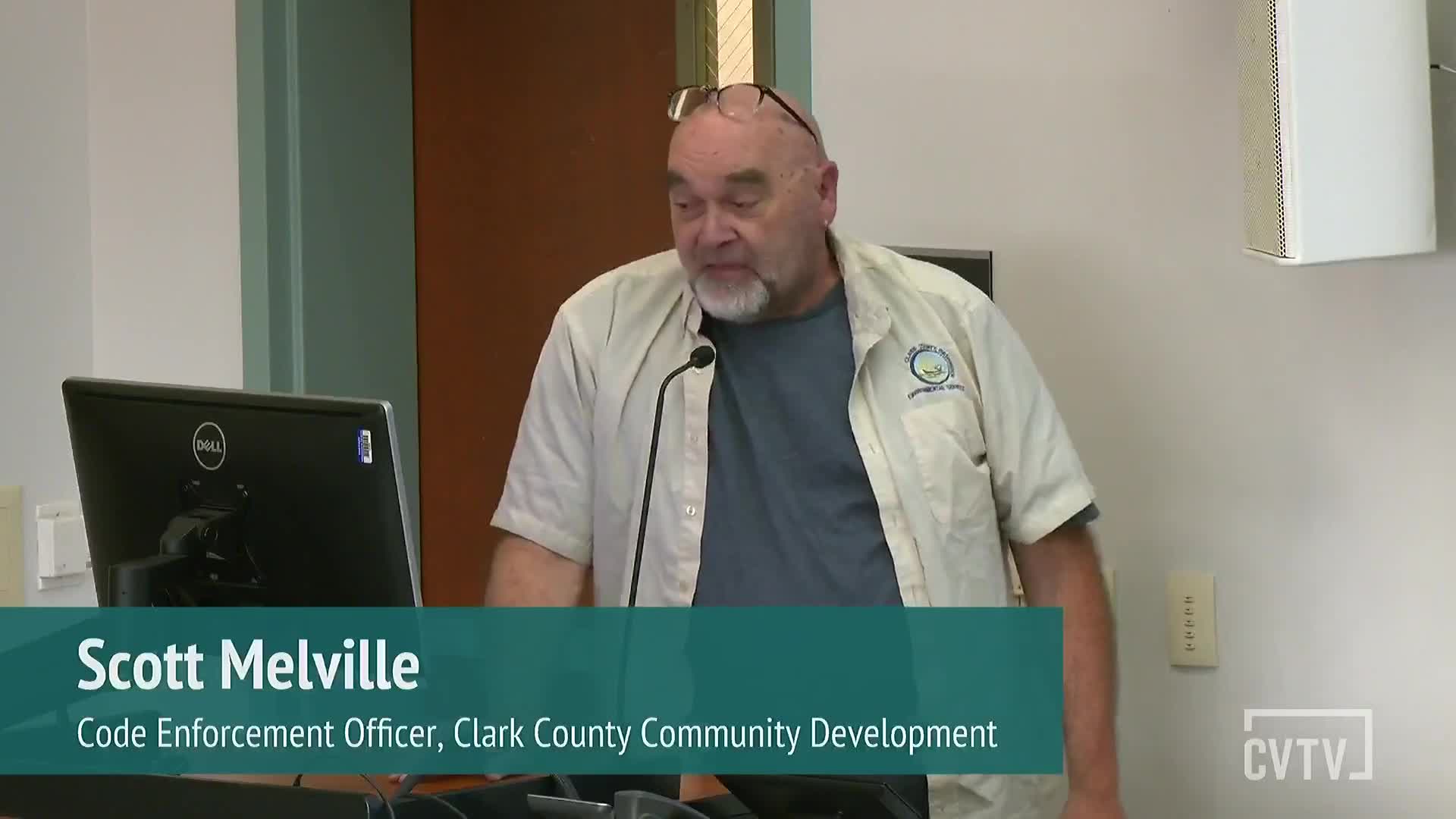Environmental Inspector Discusses Erosion Control and Habitat Ordinance Requirements
September 22, 2025 | Clark County, Washington
This article was created by AI summarizing key points discussed. AI makes mistakes, so for full details and context, please refer to the video of the full meeting. Please report any errors so we can fix them. Report an error »

In a recent government meeting held on September 22, 2025, officials from Clark County, Washington, discussed critical aspects of code enforcement related to environmental protection and land use management. The meeting highlighted the various ordinances that guide the county's efforts to maintain ecological integrity while accommodating development.
A key focus of the discussion was the enforcement of the erosion control ordinance, which aims to prevent soil erosion during construction activities. Officials emphasized the importance of implementing best management practices, such as stabilizing bare soils with mulch and maintaining clean access roads to minimize sediment tracking. The ordinance mandates daily maintenance of erosion control measures, particularly during construction periods, to protect water bodies and adjacent properties from sediment runoff.
The habitat ordinance was another significant topic, designed to safeguard environmentally sensitive areas that support fish and wildlife. Permits are required for most clearing activities within these habitats, which can include riparian zones and biodiversity corridors. The discussion underscored the need for careful management of these areas to ensure the protection of species such as black-tailed deer and bald eagles.
Wetland protection was also addressed, with officials reiterating the goal of achieving no net loss of wetland acreage or functions. The meeting outlined the permitting process for activities that may impact wetlands, including grading and construction, which are subject to specific thresholds based on the size and type of the wetland.
Additionally, the complexities of shoreline management were discussed, particularly regarding the permitting process for activities near high-volume waterways. Officials noted that shoreline permits can take years to process due to the involvement of multiple agencies, including the Department of Ecology.
The meeting concluded with a question-and-answer session, allowing attendees to seek clarification on the discussed topics. Overall, the discussions highlighted Clark County's commitment to balancing development with environmental stewardship, ensuring that regulations are in place to protect the region's natural resources while accommodating growth. As the county moves forward, ongoing collaboration with state and federal agencies will be crucial in addressing the challenges of land use and environmental protection.
A key focus of the discussion was the enforcement of the erosion control ordinance, which aims to prevent soil erosion during construction activities. Officials emphasized the importance of implementing best management practices, such as stabilizing bare soils with mulch and maintaining clean access roads to minimize sediment tracking. The ordinance mandates daily maintenance of erosion control measures, particularly during construction periods, to protect water bodies and adjacent properties from sediment runoff.
The habitat ordinance was another significant topic, designed to safeguard environmentally sensitive areas that support fish and wildlife. Permits are required for most clearing activities within these habitats, which can include riparian zones and biodiversity corridors. The discussion underscored the need for careful management of these areas to ensure the protection of species such as black-tailed deer and bald eagles.
Wetland protection was also addressed, with officials reiterating the goal of achieving no net loss of wetland acreage or functions. The meeting outlined the permitting process for activities that may impact wetlands, including grading and construction, which are subject to specific thresholds based on the size and type of the wetland.
Additionally, the complexities of shoreline management were discussed, particularly regarding the permitting process for activities near high-volume waterways. Officials noted that shoreline permits can take years to process due to the involvement of multiple agencies, including the Department of Ecology.
The meeting concluded with a question-and-answer session, allowing attendees to seek clarification on the discussed topics. Overall, the discussions highlighted Clark County's commitment to balancing development with environmental stewardship, ensuring that regulations are in place to protect the region's natural resources while accommodating growth. As the county moves forward, ongoing collaboration with state and federal agencies will be crucial in addressing the challenges of land use and environmental protection.
View full meeting
This article is based on a recent meeting—watch the full video and explore the complete transcript for deeper insights into the discussion.
View full meeting
